
More Helpful Content
Knowing the handling fees and how much of it you need to charge is a step in learning what the cost of your items ought to be. If your handling charge is determined too low, too excessive, or perhaps even non-existent, your company is likely to suffer. While determining the cost of your goods and how much you need to charge the customer is usually simple, handling fees might be more complex to determine. However, this does not mean you just assume or skip handling fees entirely.
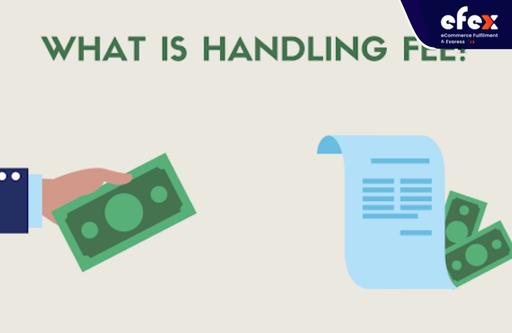
A handling fee is an additional charge added to a customer’s purchase subtotal and shipment expenses. It includes the cost of fulfillment-related expenditures like warehouse storage, transportation, and packing. Handling costs are assessed just once per order, not for every single product in the order.
Having said that, handling fees may vary based on whether you deliver outside of your country. This is due to the possibility of additional expenses for foreign handling fees, such as insurance or additional packing supplies necessary to safeguard the item traveling a greater distance. You would not want international shipping charges to cut into your earnings.
👉 Read More: What Is Material Handling Cost? Formula And Example
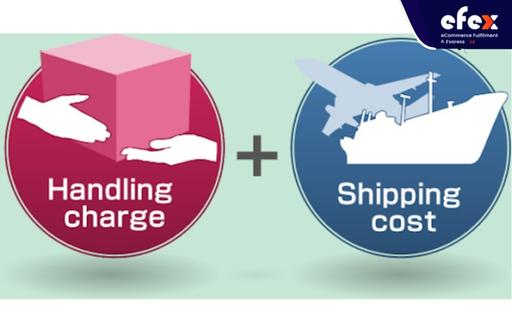
While determining prices for your online store that makes your business more profitable, bear the opposite side of the problem in mind. A hefty handling cost may be enough to persuade shoppers to quit their purchasing cart. Remember that if buyers can see your handling cost at payment, it may influence their opinion of your rates.
Shipping and handling charges are theoretically distinct expenditures. Shipping is the cost of shipping a purchase through postal or another delivery service. While handling fees cover the time and work required to prepare an order. Both are simple to understand but need different methods.
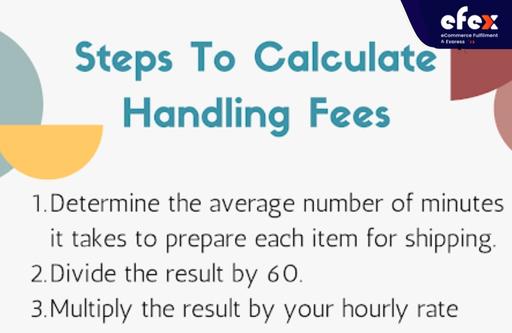
Let’s see this simple method for calculating how much it costs your e-commerce company to create a delivery. The computation depends on the hourly rate of the employee and the time it takes to pack a product. Assume you pay a worker $15 per hour and it takes them 15 minutes on average to package an order. Divide the time it takes to prepare the shipment by 60. The multiple the result by your hourly wage. In this case, the cost of getting an order ready to ship is $3.75.
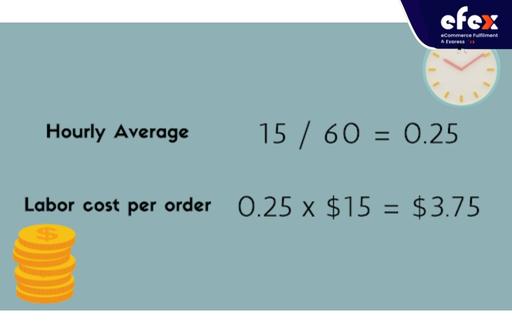
If your handling costs appear to be expensive in comparison to rivals, or if you have had consumer complaints, it may be time to evaluate your fulfillment expenses. For instance, you can need to reduce labor expenses by making the process more effective. Alternatively, you may need to switch to less expensive packing materials. After you have determined the labor-based handling charge, you can choose to include shipping and packaging fees.
So, you will ensure that you have covered all of your bases and included shipping and handling costs. Even if you are doing everything on your own, you may apply the same approach. Based on your company’s size, you can have a team that prepares orders for shipment, or you may handle it yourself.
If you fulfill orders by yourself, you may not consider handling fees like many small company owners. This is not a good thing since your time is expensive, and it is one of the overhead expenditures of running an e-commerce firm. Determine how long it takes you to package an order.
Then, as your hourly fee, decide how much you are willing to pay each hour to pack the stuff. Finally, repeat the preceding formula:
(Average number of minutes worked to package an time / 60) x Hourly Rate
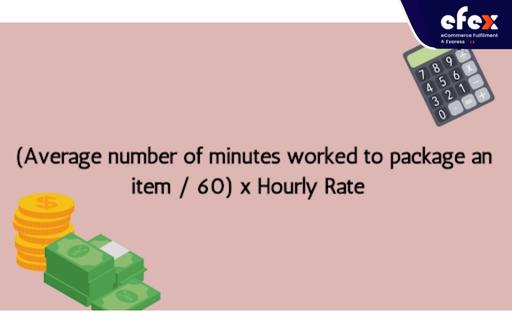
As a result, your “opportunity cost”, or the time you may have spent creating money, is calculated. As your order processing charge, just use the amount of your opportunity cost.
Shipping costs are one of the most expensive expenses for e-commerce enterprises. Postage is not cheap, and it is just getting more expensive. Prices are also determined by the carrier. This useful online shipping calculator will assist you in determining the most cost-effective method of sending a product.
The tool aggregates rates from UPS, FedEx, USPS, and DHL. Several things influence shipping rates, including dimensions, distances, weight, and delivery speed.
Envelopes, carton boxes, plastic wrap, and tapes are not provided for free. Skipping this cost may have a detrimental influence on your bottom line.
For example, if an envelope costs $1.5 and packing materials cost $1, then the total cost of the packaging order is $2.5. It depends on you whether you can incorporate the $2.5 into the product’s selling price, or incorporate it into a handling charge. Then, using this cost to the handling fee which we calculated on the above example in the calculating handling fees part.
Total Handling Fee = $3.75 + $2.5 = $6.25
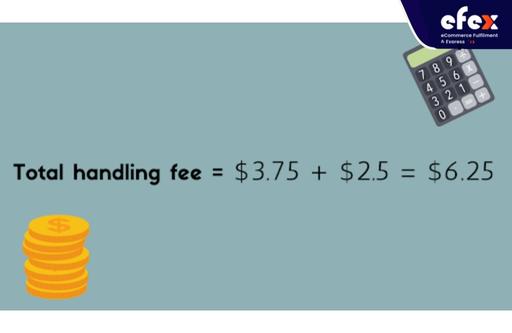
It is no surprise that transferring shipping and handling fees to buyers has its advantages and disadvantages. Doing this can streamline pricing, cover expenditures, and promote cross-selling chances.
Shipping, packing materials, and labor expenses are all factored into the price of every product excluding handling fees. Putting handling costs as a subtotal section streamlines single product price.
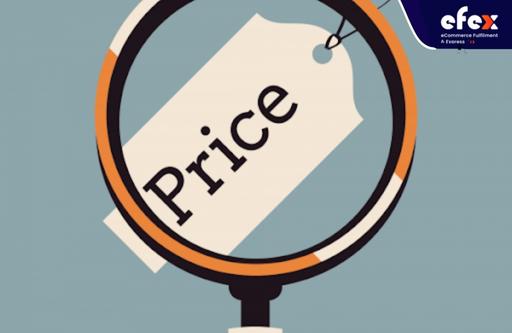
Charging for effort, shipping, time, and packaging of purchases assure that all connected expenses are accounted for.
Fees passed on to clients improve the likelihood of higher sales volumes and total earnings. Target only provides free standard shipping on orders of $35 or above, or even on items purchased with a Red Card credit card.
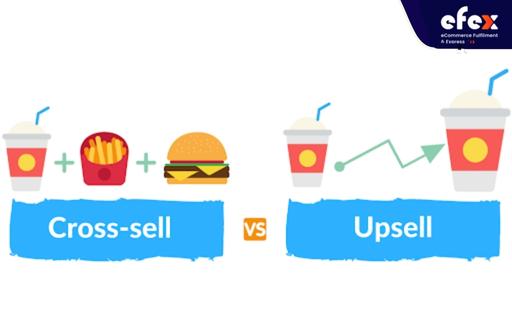
Customers are more inclined to spend an additional amount of $10 to $20 on a product than on delivery, which has no apparent value. To assist customers in meeting their minimum, e-commerce systems might propose solutions depending on their cart and purchasing history.
However, transferring handling costs to clients has its consequences as well. Think about the impact of handling costs on the loss of sales, sales revenues, and future missed opportunities.
According to the National Federation, many buyers increasingly check shipping and handling charges prior to adding products to their online carts. A 2019 NRF poll confirmed this attitude.

Failure to consider these client attitudes may result in lost revenues that surpass the handling and free shipping costs.
Customers who purchase just on price recall which shops provide free delivery and which do not. When customers find out where they can find the greatest deal online, they will avoid visiting more expensive choices. Fewer page visits mean fewer chances to turn a consumer into a sale.
Free shipping and handling are frequently used by online merchants as a promotional technique to encourage customers. One strategy to advance clients through a conversion funnel is to charge no further costs. On the other hand, free delivery may have a higher cost per purchase than other options.

Customers prefer a 10% to 20% purchase discount over free shipping and handling. They leave feeling as if they obtained a benefit, and firms profit more.
In the customer role, you can change and take your business elsewhere. But it may be difficult unless the goods and services can be simply replaced or purchased elsewhere. There are few and even no other businesses that may offer the same item or quality of service. In other circumstances, the only thing a client may do is to pay the handling or service fee required by the firm.

Furthermore, additional fees and levies come in various disguises and identities. For example, you can typically encounter a “cake charge” in a restaurant. Customers who bring their own birthday or celebration cakes should choose this option. It is often charged per cake or person. The fee covers the expense of providing napkins, plates, and cutlery for the cake, as well as the opportunity cost of not selling a cake at all.
There is not much you can do in this case. Assuming you asked about any cake charges while booking your reservation, you will have two options and, for sure, your choice will be determined by whatever option is the most cost-effective.
First, you can pay the cake price per person. But you may discover that it soon adds up. Second, you may make an order for a cake through the restaurant.
On the other side, they could not have what you are looking for. There is still one more thing you can do to object to the expense of additional charges in the first place. Though, this would very certainly be received with stone-cold stillness. Note that companies assess these optional fees to reclaim expenditures and expenses that they may not cover via day-to-day operations.
Let’s look at some easy instances of how to calculate shipping and handling fees per order in the below part.
Firstly, a simple order from a consumer that satisfies your $100 minimum order amount. It is merely the percentage handling charge applied to the invoice in this case. In this example, we will have the handling fee of $5.
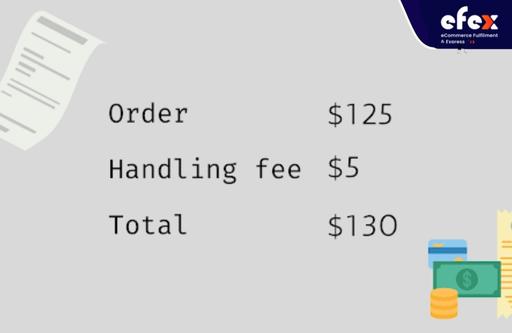
Secondly, a consumer placed an order with you that falls short of your free shipping requirement. As a result, in addition to the minimum handling charge for packaging the purchase, you must add a shipping fee for local delivery.
For example, if your minimum order for free shipping is $100, but your buyers just bought $95, you will need to add a shipping fee of $5 along with a handling fee of $4. Depending on the elements that affect your handling calculation and the distance you ship the order, the handling fee and shipping fee can vary.
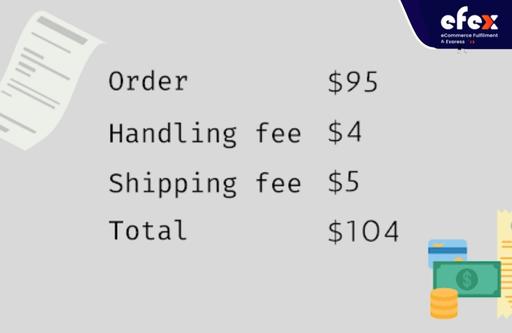
Thirdly, a substantial order that requires next-day delivery. Keep in mind that a larger order usually implies a larger box and additional packing materials. It does not always have to be the case, since some tiny goods can be quite valuable. However, they will require additional packaging material to avoid damage during delivery.
For example, if you order a refrigerator, the handling fee will be increased because of additional materials to package your refrigerator in order to not be damaged when it is shipped to your house.
👉 Read More: What Is The Procurement Cycle? Process And Example
Handling fees represent the additional costs that come with packing a transaction and preparing it for delivery. Rather than you paying the charge, your consumers will pay it when it is included in the overall cost. You would have to pay some of these charges anyway, and the more orders you have, the more revenue you lose.
Therefore, understanding how to calculate handling fees on your orders to manage your expenditures and preserve profit margins is a critical thing. Hope you have a good time with Efex.


